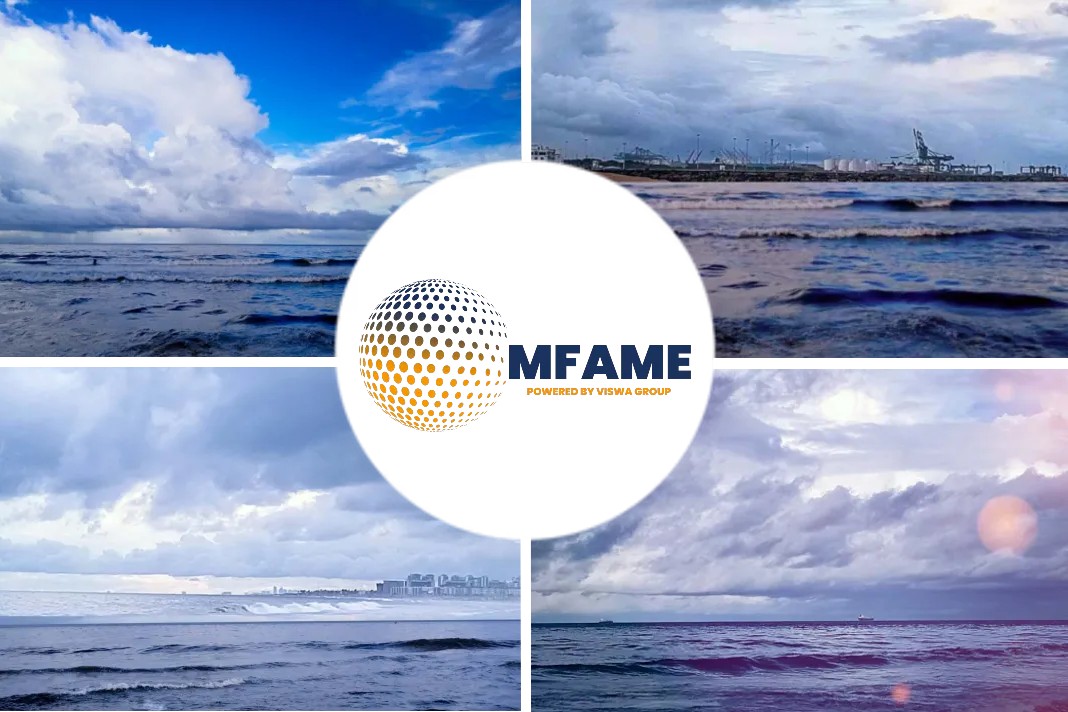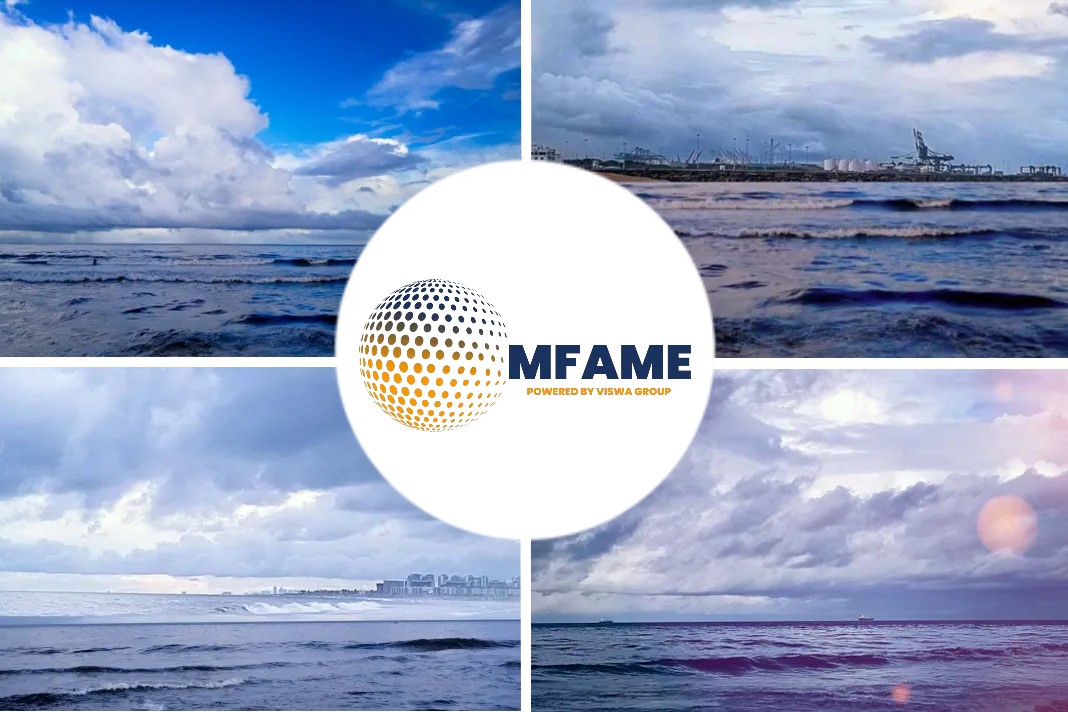- Experts maintain that ocean carriers may have finally figured out how to make money this year, as sluggish demand last summer made sustainable pricing more important than ever.
- Shippers now cannot afford to miss vital bookings this peak season, thereby committing to contracts early.
- Maritime industry analysts note that ocean cargo carriers may finally be seeing some brighter days ahead.
- Analysts agree that ocean cargo carriers have a spotty record of maintaining vessel capacity deployment discipline over the long-term.
Logistics Management examines increasing ocean cargo volumes for the top 30 ocean carriers this year and shares insights for global shippers from Descartes’ Mark Segner.
Surging container volumes
After a six-month lull in shipper demand during the heightened COVID-19 crisis, container volumes are now surging as consumer confidence strengthens, manufacturing ramps up and retailers seek to rebuild their inventories.
Maritime industry analysts for the London-based Transport Intelligence (Ti) note that ocean cargo carriers may finally be seeing some brighter days ahead.
In fact, two leading container shipping lines reported relatively robust figures at the second quarter and half-year point in advance of peak season, confirming the general trend toward solid profits in the face of weak volumes.
Maersk: Container volumes climb
Maersk saw earnings jump by 25% year-on-year over the second quarter. This was despite revenue falling by 6.5% and volumes heading down by 15%.
According to Maersk, the key to this success was what it called “agile capacity deployment” in its core container shipping business. However, other parts of the group were also fairly stable, with logistics experiencing markedly higher profits despite demand being fairly flat.
Company officials said that this might be due to a better performance in its role as a third-party logistics (3PL) provider and forwarder. Furthermore, the terminals business was also more profitable in the face of soft demand.
OOIL: Fall in volumes
The picture at Hong Kong-based Orient Overseas (International) Limited (OOIL), owner of OOCL shipping line, was slightly different, with first-half revenue edging up by 3.9% year-on-year, but operating profits falling by over 20% to $155 million.
Container volumes fell just 3%. Overall revenue per twenty-foot equivalent units (TEU) increased over the period, with the Asia-Europe route being particularly buoyant.
Like Maersk, OOIL says that it managed by “paying careful attention to customer demand and reviewing and calibrating services accordingly on a timely basis,” along with paying closer attention to “prioritized cost management during the anticipated tough conditions of 2020.”
“The fact the robustness of the container shipping sector is no longer a surprise is quite remarkable,” says Thomas Cullen, an analyst at Ti. “At one time it might have been expected that sustained falls of this magnitude would have led to the severest distress in this market. It also would have led to large falls in prices.”
Cullen notes that while this might seem to be good news for both investors and those in the shipping sector, it may not be quite so positive for those logistics managers seeking to leverage better container rates during Peak Season.
Meanwhile, OOIL spokesmen have stated that they have ordered five new 25,000 TEU vessels, something that in the past would have assumed to have “implications” for the balance between demand and supply, and thus freight rates, observes Cullen.
“In the present structure of the container shipping industry, however, it may not wise to make such assumptions,” he concludes.
U.S. Maritime Exports (Data available from 01/01/2020 – 08/18/2020)
Rank | Operator | Export TEU |
1 | MSC-MEDITERRANEAN SHIPPING COMPANY S A (MSCU) | 908,144.27 |
2 | OCEAN NETWORK EXPRESS PTE LTD (ONEY) | 865,914.41 |
3 | HAPAG LLOYD A G (HLCU) | 683,152.01 |
4 | CMA-CGM (CMDU) | 620,321.57 |
5 | MAERSK LINE (MAEU) | 605,944.11 |
6 | EVERGREEN LINE (EGLV) | 464,336.02 |
7 | ORIENT OVERSEAS CONTAINER LINE LTD (OOLU) | 423,635.57 |
8 | CHINA OCEAN SHIPPING COMPANY (COSU) | 352,461.01 |
9 | APL CO PTE LTD-NOL GROUP (APLU) | 308,036.84 |
10 | YANG MING MARINE TRANSPORT CORP (YMLU) | 287,459.26 |
11 | HAMBURG SUD (SUDU) | 216,136.08 |
12 | HYUNDAI MERCHANT MARINE (HDMU) | 209,667.16 |
13 | SEABOARD MARINE LTD (SMLU) | 184,443.24 |
14 | ZIM INTEGRATED SHIPPING SERVICES LTD (ZIMU) | 98,514.41 |
15 | A P MOLLER-MAERSK A/S (SEAU) | 78,965.51 |
16 | SM LINE CORPORATION (SMLM) | 50,820.01 |
17 | SAFMARINE CONTAINER LINES (HEREINAFTER SAFMARINE) (SAFM) | 34,611.67 |
18 | CROWLEY LINER SERVICES INC (CAMN) | 33,632.01 |
19 | KING OCEAN SERVICES LIMITED INC (KOSL) | 31,842.62 |
20 | INDEPENDENT CONTAINER LINE LTD (IILU) | 29,999.51 |
21 | ATLANTIC CONTAINER LINE AB (ACLU) | 28,255.34 |
22 | ANL SINGAPORE PTE LTD (ANLC) | 22,291.51 |
23 | PACIFIC INTERNATIONAL LINES (PTE) LTD (PABV) | 11,975.01 |
24 | GRIMALDI DEEP SEA S P A (GDSL) | 10,053.25 |
25 | DOLE OCEAN CARGO EXPRESS (DOLQ) | 6,078.01 |
26 | CG RAILWAY INC (CGRW) | 4,574.00 |
27 | WAN HAI LINES LTD (WHLC) | 4,283.65 |
28 | WALLENIUS WILHELMSEN LOGISTICS AMERICAS LLC (WLWH) | 3,517.00 |
29 | LINEA PENINSULAR INC (LPUS) | 3,308.01 |
30 | MAERSK LINE LIMITED (MAEI) | 1,274.01 |
U.S. Maritime Imports (Data available from 01/01/2020 – 08/26/2020)
| Rank | OPERATOR | IMPORT TEU |
1 | MSC-MEDITERRANEAN SHIPPING COMPANY S A – MEDU (MSCU) | 1,158,257.11 |
2 | MAERSK LINE (MAEU) | 913,736.30 |
3 | EVERGREEN LINE (EGLV) | 835,672.88 |
4 | OCEAN NETWORK EXPRESS PTE LTD (ONEY) | 755,545.90 |
5 | CMA-CGM (CMDU) | 732,290.07 |
6 | HAPAG LLOYD A G (HLCU) | 659,811.41 |
7 | COSCO SHIPPING LINES CO LTD (COSU) | 535,926.05 |
8 | ORIENT OVERSEAS CONTAINER LINE LTD (OOLU) | 435,842.14 |
9 | APL CO PTE LTD-NOL GROUP (APLU) | 362,273.31 |
10 | BLUE ANCHOR AMERICA LINE (BLUE ANCHOR LINE) (BANQ) | 327,655.89 |
11 | EXPEDITORS INTERNATIONAL OF WASHINGTON INC (EXDO) | 285,576.91 |
12 | HYUNDAI MERCHANT MARINE (HDMU) | 284,187.71 |
13 | HAMBURG SUED (SUDU) | 273,352.22 |
14 | CHRISTAL LINES (CHSL) | 255,988.06 |
15 | YANG MING MARINE TRANSPORT CORP (YMLU) | 254,992.32 |
16 | APEX SHIPPING CO (AMAW) | 241,419.76 |
17 | ZIM INTEGRATED SHIPPING SERVICES LTD (ZIMU) | 222,611.59 |
18 | ORIENT EXPRESS CONTAINER CO INC (OERT) | 182,918.30 |
19 | HONOUR LANE SHIPPING LTD (HNLT) | 163,445.47 |
20 | SEABOARD MARINE LTD (SMLU) | 159,109.50 |
21 | TRANSFRUT EXPRESS LIMITED (TFXL) | 154,817.54 |
22 | DANMAR LINES LTD (DMAL) | 137,269.03 |
23 | SEALAND (SEAU) | 129,951.58 |
24 | TOPOCEAN CONSOLIDATION SERVICE (LOS ANGELES) INC (TOPO) | 126,031.42 |
25 | GREAT WHITE FLEET CORP (GWFC) | 113,987.86 |
26 | SCHENKEROCEAN (HONG KONG) (SHKK) | 109,862.60 |
27 | HECNY SHIPPING LIMITED (HYSL) | 106,556.73 |
28 | DSV OCEAN TRANSPORT (DSVF) | 91,837.66 |
29 | SM LINE CORPORATION (SMLM) | 73,832.40 |
30 | ORIENT STAR TRANSPORT INTL LTD (OSTI) | 68,707.08 |
A fundamental imbalance
Other analysts agree that ocean cargo carriers have a spotty record of maintaining vessel capacity deployment discipline over the long-term. Paul Bingham, director of transportation freight consulting at IHS Markit, says that it’s been especially poor in the last decade.
“There remains a fundamental imbalance between total vessel fleet capacity and demand, that carriers only partially overcome through blanked sailings, slow steaming and the vessel lay-ups,” says Bingham. He further notes that container operators recently “have been more restrained” in placing additional vessel orders, resulting in a declining backlog in the shipyards’ orderbooks as new vessels are completed.
According to the International Maritime Organization (IMO), the global containership orderbook as seen as a percentage of the world fleet, has dropped to a historic low point in September. This represents a continued decline over the past few years, analysts add, noting that the orderbook-to-fleet ratio now stands at only 9.4% or 2.21 million TEUs.
According to DHL Global Forwarding’s latest report on the ocean freight market, the top nine carriers now have 86 ships of over 10,000 TEU on order representing a capacity of 1,47 million TEU, but many of these projects may be stalled as a consequence of an uncertain market and COVID-19.
Low cargo demand
Currently, two carriers with the largest orderbooks are CMA CGM and Evergreen, which belong to the same OCEAN Alliance. The Alliance already has a market share of 39.5% on the trans-Pacific and 38.7% on the Asia-Europe trade.
Yet the deployment of 57 extra ships with a capacity of more than 10,000 TEU (representing over 1 million TEU), may be a challenging task in times of expected low cargo demand growth, industry observers say.
THE Alliance members have 24 mega-vessels on order (349,000 TEU), while the 2M partners have only 5x 23,650 TEU ships in the pipeline, says Stephen Fletcher, an analyst for Alphaliner, a Paris-based maritime consultancy.
“While the major carriers are currently enjoying strong cargo demand and healthy spot rates on the two biggest east-west trades, it has yet to measure how cargo demand will evolve after peak season,” Fletcher concludes.
General rate increases
Meanwhile, leading ocean carriers have been inclined to impose a series of general rate increases (GRIs) based on an analysis of their costs.
Carriers argue that this must be done to maintain viability in the market and to ensure that necessary maintenance and upgrades are performed. This is exacerbated for shippers when a peak season Ssurcharge (PSS) is also charged.
Jon Monroe, president of Monroe Consulting in Shanghai, says that his shipper clients were concerned about pending GRIs increasing until China’s Ministry of Transport stepped in last September to set a limit.
“Though many people feel the carriers deserve an increase, at what point does it become obscene?” asks Monroe. “We had three GRIs within the first four weeks that contracts were signed. Everyone choked on that, but were able to justify it because the carriers needed it.”
Understanding the cost impact
According to Monroe, most U.S. importers have been reeling with these increases, as senior logistics managers in most companies had to take a walk to the C-suite to explain the cost impact. “First small increases…then they just kept coming,” says Monroe.
“Imagine having to justify a doubling of the cost of your inbound transportation budget. At what point does this become ridiculously stupid? When is a contract enforceable and who will administer the enforcement of contracts? Just another week working in the trans-Pacific trade.”
On a final encouraging note, Monroe points to the fact that the Federal Maritime Commission (FMC) has stared an investigation of carriers who may be colluding on rates in the trans-Pacific.
“The FMC is now actively monitoring for any potential effect on freight rates and transport service levels, using a variety of sources and markers, including the exhaustive information that parties to a carrier agreement must file with the agency,” says Monroe. “It can’t come soon enough,” he asserts.
Did you subscribe to our daily newsletter?
It’s Free! Click here to Subscribe!
Source: Logistics Management




















![[Watch] War with China is Imminent!](https://mfame.guru/wp-content/uploads/2017/02/Trump-steve-80x60.jpg)

Thank You for sharing the detailed information about Ocean freight. It is very helpful. Good luck for upcoming articles. PDS International is also providing best Ocean freight Services.
YOUR DIGITAL FREIGHT FORWARDER PDS INTERNATIONAL PVT. LTD